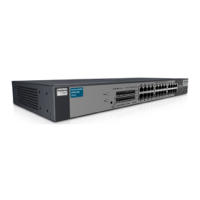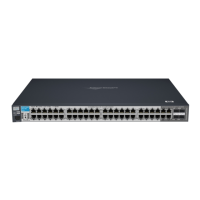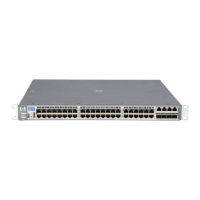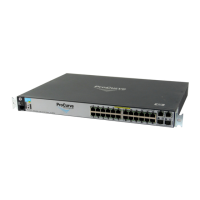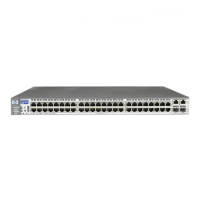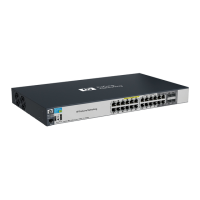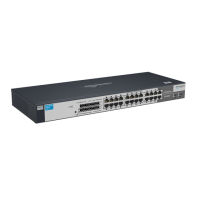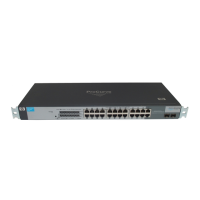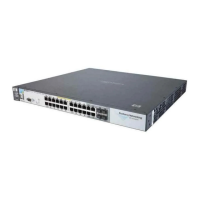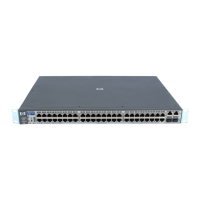6-30
Quality of Service (QoS): Managing Bandwidth More Effectively
Using QoS Types To Configure QoS for Outbound Traffic
2. Determine the DSCP policy for packets carrying the selected IP address:
a. Determine the DSCP you want to assign to the selected packets. (This
codepoint will be used to overwrite the DSCP carried in packets
received from upstream devices.)
b. Determine the 802.1p priority you want to assign to the DSCP.
3. Configure the DSCP policy by using dscp-map to configure the priority to
the codepoint you selected in step 2a. (For details, refer to “Differentiated
Services Codepoint (DSCP) Mapping” on page 6-58.)
Notes A codepoint must have an 802.1p priority assignment (0 - 7) before you can
configure a policy for prioritizing packets by IP address. If a codepoint you
want to use shows No-override in the Priority column of the DSCP map (show
qos dscp-map), then you must assign a 0 - 7 priority before proceeding.
4. Configure the switch to assign the DSCP policy to packets with the
specified IP address.
Syntax: qos dscp-map < codepoint > priority < 0 - 7 >
This command is optional if a priority has already been
assigned to the < codepoint >. The command creates a DSCP
policy by assigning an 802.1p priority to a specific DSCP.
When the switch applies this policy to a packet, the priority
determines the packet’s queue in the outbound port to which
it is sent. If the packet leaves the switch on a tagged port, it
carries the 802.1p priority with it to the next downstream
device. If the packet is IPv4, the packet’s DSCP will be
replaced by the codepoint specified in this command.
(Default: For most codepoints, No-override. See figure 6-11
on page 6-59.)
Syntax: qos device-priority < ip-address > dscp < codepoint >
Assigns a DSCP policy to packets carrying the specified IP
address, and overwrites the DSCP in these packets with the
assigned
< codepoint > value. This policy includes an 802.1p
priority and determines the packet’s queue in the outbound
port to which it is sent. If the packet leaves the switch on a
tagged port, it carries the 802.1p priority with it to the next
downstream device. (Default: No-override)
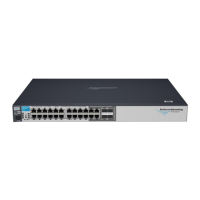
